Forward Collision-Avoidance Assist malfunction and limitations
Forward Collision-Avoidance Assist malfunction
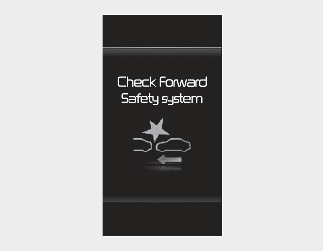
When Forward Collision-Avoidance Assist is not working properly, the warning message will appear and the 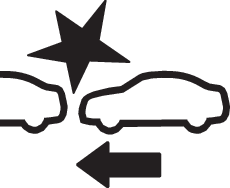 and
and  warning lights will appear on the cluster. In this case, have your vehicle inspected by an authorized Kia dealer.
warning lights will appear on the cluster. In this case, have your vehicle inspected by an authorized Kia dealer.
Forward Collision-Avoidance Assist disabled
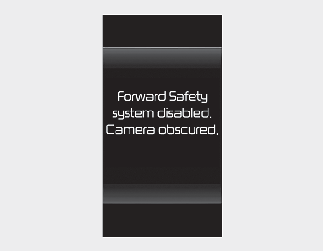
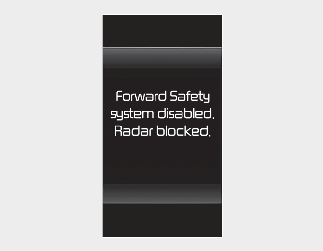
When the front windshield where the front view camera is located, front radar cover or sensor is covered with foreign material
such as snow or rain, it can reduce the detecting performance and temporarily limit or disable Forward Collision-Avoidance
Assist. If this occurs the warning message will appear and the  and
and  warning lights will appear on the cluster.
warning lights will appear on the cluster.
Forward Collision-Avoidance Assist will operate properly when snow, rain or foreign matter is removed. If Forward Collision-Avoidance Assist does not operate properly after it is removed, have the vehicle inspected by an authorized Kia dealer.

-
Even though the warning message or warning light does not appear on the cluster, Forward Collision-Avoidance Assist may not properly operate.
-
Forward Collision-Avoidance Assist may not properly operate in an area (for example, open terrain), where any objects are not detected after turning ON the engine.
Limitations of Forward Collision-Avoidance Assist
Forward Collision-Avoidance Assist may not operate properly or it may operate unexpectedly under the following circumstances:
-
The detecting sensor or the surroundings are contaminated or damaged
-
The temperature around the front view camera is high or low due to the external environment
-
The camera lens is contaminated due to tinted, filmed or coated windshield, damaged glass, or sticky foreign matters (sticker, bug, etc.) on the glass
-
Moisture is not removed or frozen on the windshield
-
Washer fluid is continuously sprayed, or the wiper is on
-
Driving in heavy rain or snow, or thick fog
-
The field of view of the front view camera is obstructed by sun glare
-
Street light or light from an oncoming traffic is reflected on the wet road surface, such as a puddle on the road
-
An object is placed on the dashboard
-
Your vehicle is being towed
-
The surrounding is very bright
-
The surrounding is very dark, such as in a tunnel, etc.
-
The brightness changes suddenly, for example when entering or exiting a tunnel
-
The brightness outside is low, and the headlamps are not on or are not bright
-
Driving through steam, smoke or shadow
-
Only part of the vehicle, pedestrian or cyclist is detected
-
The vehicle in front is a bus, heavy truck, truck with an unusually shaped cargo, trailer, etc.
-
The vehicle in front has no tail lights, tail lights are located unusually, etc.
-
The brightness outside is low, and the tail lamps are not on or are not bright
-
The rear of the front vehicle is small or the vehicle does not look normal, such as when the vehicle is tilted, overturned, or the side of the vehicle is visible, etc.
-
The front vehicle’s ground clearance is low or high
-
A vehicle, pedestrian or cyclist suddenly cuts in front
-
The bumper around the front radar is impacted, damaged or the front radar is out of position
-
The temperature around the front radar is high or low
-
Driving through a tunnel or iron bridge
-
Driving in large areas where there are few vehicles or structures (for example, desert, meadow, suburb, etc.)
-
Driving near areas containing metal substances, such as a construction zone, railroad, etc.
-
A material is near that reflects very well on the front radar, such as a guardrail, nearby vehicle, etc.
-
The cyclist in front is on a bicycle made of material that does not reflect on the front radar
-
The vehicle in front is detected late
-
The vehicle in front is suddenly blocked by an obstacle
-
The vehicle in front suddenly changes lane or suddenly reduces speed
-
The vehicle in front is bent out of shape
-
The front vehicle’s speed is fast or slow
-
The vehicle in front steers in the opposite direction of your vehicle to avoid a collision
-
With a vehicle in front, your vehicle changes lane at low speed
-
The vehicle in front is covered with snow
-
You are departing or returning to the lane
-
You are driving unstably
-
You are on a roundabout and the vehicle in front is not detected
-
You are continuously driving in a circle
-
The vehicle in front has an unusual shape
-
The vehicle in front is driving uphill or downhill
-
The pedestrian or cyclist is not fully detected, for example, if the pedestrian is leaning over or is not fully walking upright
-
The pedestrian or cyclist is wearing clothing or equipment that makes it difficult to detect as a pedestrian or cyclist
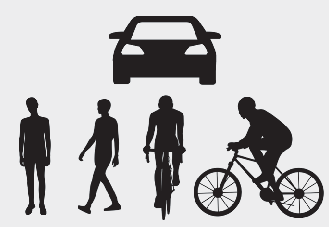
-
The pedestrian or cyclist in front is moving very quickly
-
The pedestrian or cyclist in front is short or is posing a low posture
-
The pedestrian or cyclist in front has impaired mobility
-
The pedestrian or cyclist in front is moving intersected with the driving direction
-
There is a group of pedestrians, cyclists or a large crowd in front
-
The pedestrian or cyclist is wearing clothing that easily blends into the background, making it difficult to detect
-
The pedestrian or cyclist is difficult to distinguish from the similarly shaped structure in the surroundings
-
You are driving by a pedestrian, cyclist traffic signs, structures, etc. near the intersection
-
Driving in a parking lot
-
Driving through a tollgate, construction area, unpaved road, partial paved road, uneven road, speed bumps, etc.
-
Driving on an incline road, curved road, etc.
-
Driving through a roadside with trees or streetlights
-
The adverse road conditions cause excessive vehicle vibrations while driving
-
Your vehicle height is low or high due to heavy loads, abnormal tire pressure, etc.
-
Driving through a narrow road where trees or grass are overgrown
-
There is interference by electromagnetic waves, such as driving in an area with strong radio waves or electrical noise
-
The adverse road conditions cause excessive vehicle vibrations while driving
-
Your vehicle height is low or high due to heavy loads, abnormal tire pressure, etc.

-
Driving on a curved road
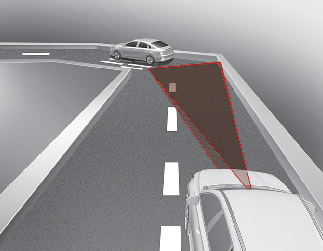
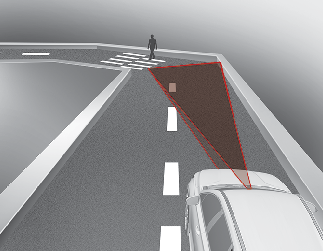
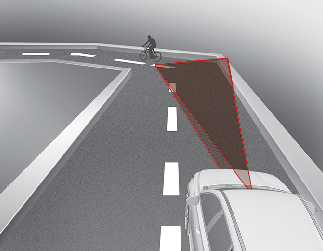
Forward Collision-Avoidance Assist may not detect the vehicle, pedestrian or cyclist traveling in front on a curved road.
Always pay attention to road and driving conditions, and if necessary, depress the brake pedal to reduce your driving speed in order to maintain a safe distance.
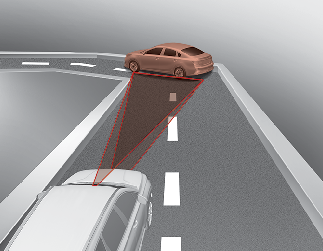
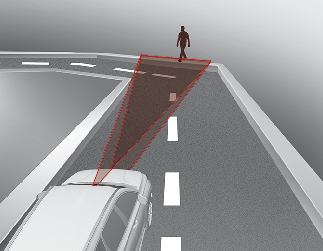
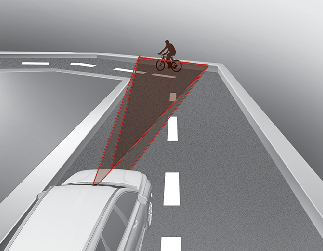
Forward Collision-Avoidance Assist may detect the vehicle, pedestrian or cyclist in the next lane or outside the lane when driving on a curved road. If this occurs, Forward Collision-Avoidance Assist may unnecessarily warn the driver and control the brake. Always check the traffic conditions around the vehicle.
-
Driving on an inclined road
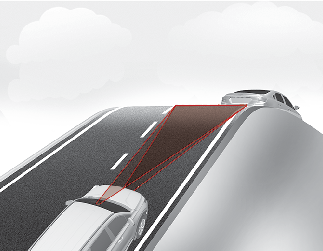
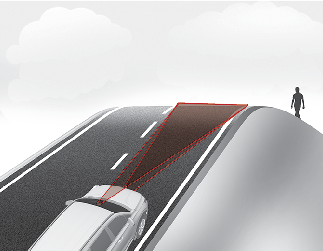
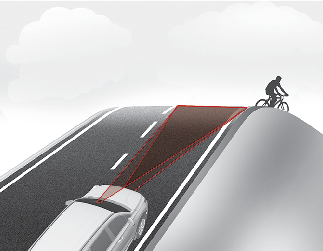
Forward Collision-Avoidance Assist may not detect other vehicle, pedestrian or cyclist in front while driving uphill or downhill and this may result in no warning, or braking assist when necessary.
When Forward Collision-Avoidance Assist suddenly recognizes the vehicle, pedestrian or cyclist in front while passing over a slope, you may experience sharp deceleration.
Always keep your eyes forward while driving upward or downward on a slope, and, if necessary, depress the brake pedal to reduce your driving speed in order to maintain distance.
-
Changing lanes
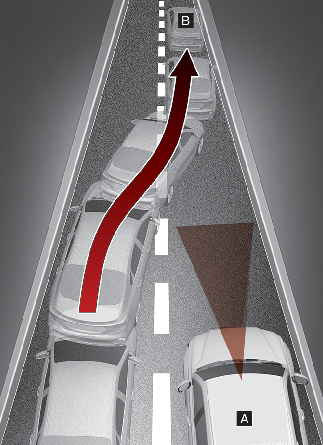
[A]: Your vehicle
[B]: Lane changing vehicle
When a vehicle changes lanes in front of you, Forward Collision-Avoidance Assist may not immediately detect the vehicle, especially if the vehicle changes lanes abruptly. In this case, you must maintain a safe braking distance, and if necessary, depress the brake pedal to reduce your driving speed in order to maintain a safe distance.
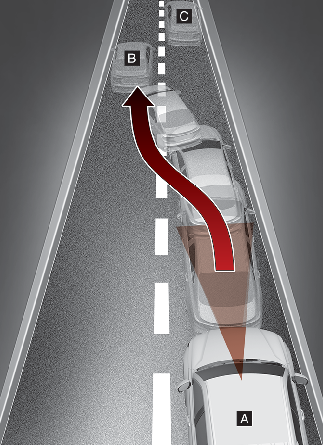
[A]: Your vehicle
[B]: Lane changing vehicle
[C]: Same lane vehicle
When driving in stop-and-go traffic, and a stopped vehicle in front of you merges out of the lane, Forward Collision-Avoidance Assist may not immediately detect the new vehicle that is now in front of you. In this case, you must maintain a safe braking distance, and if necessary, depress the brake pedal to reduce your driving speed in order to maintain a safe distance.
-
Detecting vehicle
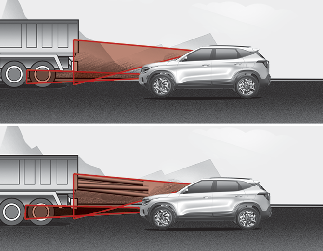
When the vehicle in front has heavy loading extended rearward, or when the vehicle in front has higher ground clearance, it may induce a hazardous situation. Always pay attention to road and driving conditions, while driving and, if necessary, depress the brake pedal to reduce your driving speed in order to maintain distance.

-
When you are towing a trailer or another vehicle, we recommend that Forward Collision-Avoidance Assist is turned off due to safety reasons.
-
Forward Collision-Avoidance Assist may operate if objects that are similar in shape or characteristics to vehicles, pedestrians or cyclists are detected.
-
Forward Collision-Avoidance Assist does not operate on bicycles, motorcycles, or smaller wheeled objects, such as luggage bags, shopping carts, or strollers that are dragged by a pedestrian or a cyclist.
-
Forward Collision-Avoidance Assist may not operate properly if interfered by strong electromagnetic waves.
-
Forward Collision-Avoidance Assist may not operate for 15 seconds after the vehicle is started, or the front view camera is initialized.
This device complies with Part 15 of FCC rules.
Operation is subject to the following two conditions:
-
This device may not cause harmful interference, and
-
This device must accept any interference received, including interference that may cause undesired operation.
CAUTION TO USERS
Changes or modifications not expressly approved by the party responsible for compliance could void the user’s authority to operate the equipment.
Radio frequency radiation exposure information:
This equipment complies with FCC radiation exposure limits set forth for an uncontrolled environment.
This equipment should be installed and operated with minimum distance of 8 in (20 cm) between the radiator (antenna) and your body.
This transmitter must not be co-located or operating in conjunction with any other antenna or transmitter.